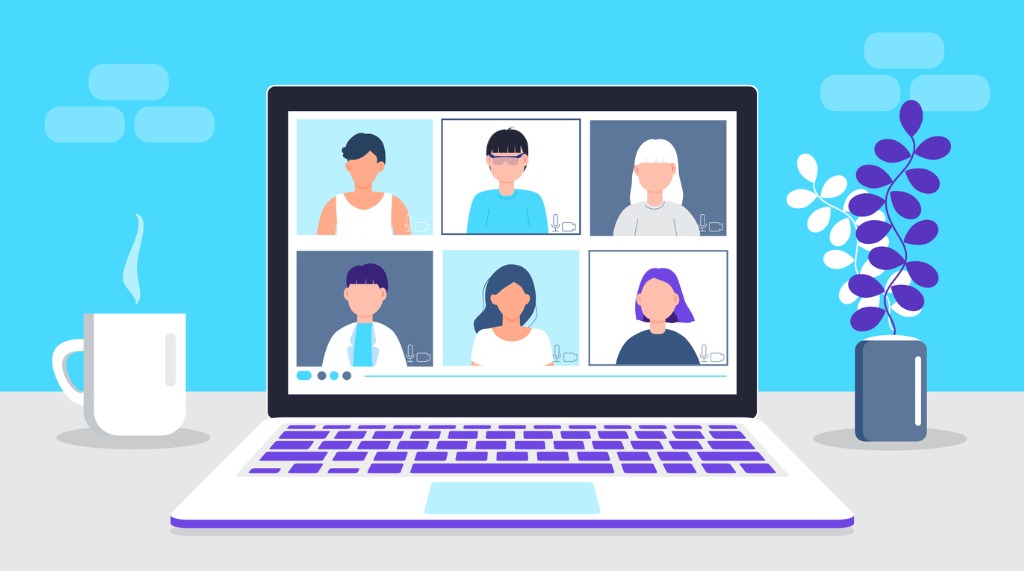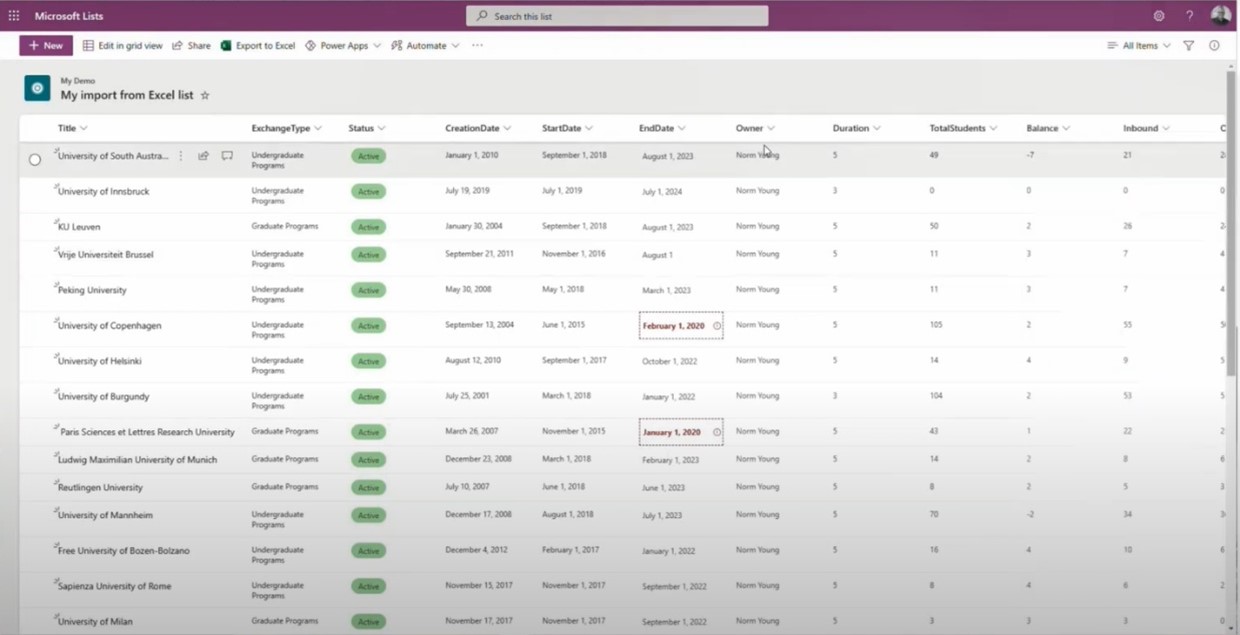4 Business Lessons We Learned from Microsoft 365 Experts

As we adapt to new work environments, we continue to innovate our technology and business processes. Even when the world seemed to halt for a while, our learning never stopped. As we embark on the future of work and pursue looking for the best work practices the Microsoft 365 Community Talks series aims to help organizations adapt and thrive.
Throughout the series, our guests have shared a multitude of tips and guides to help improve business processes, from virtual experiences to people-focused business strategies. Read on for concise summaries of each guest episode.
1. How to Deliver Great Virtual Experiences for Community Events in the Age of Remote Work
With so many distractions in this age of remote work it’s not easy to create virtual events, and it’s even tougher to deliver great virtual experiences. Being an amazing organizer is one thing; having a platform that delivers and lets you and your attendees enjoy the experience is another matter.

Examining the communication landscape of Microsoft Teams, special guest Patrick Guimonet asserts that Live Events and Meetings are the best platforms for delivering community events. He went on to discuss each of the platforms’ key features and how to utilize each for the best virtual event experience.
Live events
Unless you prefer your keynotes small and intimate, Microsoft Teams Live Events is the better choice for keynotes and conferences due to its large number of possible participants and various features that let the speaker have the spotlight.
With Live Events you can mute all participants, eliminating possible interruptions from the audience but not completely wiping out chances for interactions through the Q&A chat box feature.
Having an overview of your virtual event is crucial. With Live Event’s great statistics on live and post-event attendance, you’ll know how your attendee performance turned out.
Videos can be watched live or on-demand, with captions and translations readily available. It can accommodate several speakers as well, although one slide deck can only be shared at a time.
Live Events are easy to set up once you know the ins and outs, although it’s still very important to test and retest before the event as some configurations can create issues, especially when your speaker isn’t within your tenant.

Microsoft Teams Meetings
If you value interaction, Meetings is the preferable communication platform for you.
Teams Meetings is a very easy way to meet with people as you don’t have much to set up and they’re convenient for everyone to join. It can be challenging for people not used to using Teams, but it can be remedied by having appropriate guides to lead people to do the right thing.
Even with everyone having the freedom to mute or unmute themselves, Meetings have an attached chat that can be used for Q&A or simply for putting your message across without having to open your mic. Like Live Events, Meetings also has great statistics on live and post-event attendance and can be recorded to be watched on-demand.
2. How to Avoid Headaches When Arranging Meetings by Streamlining the Process Through Helpful Tools
The reoccurring issue people usually face with meetings is arranging the meeting itself. You can’t blame them—from the confusing meeting options to back and forth emailing to confirm meeting schedules—the experience can be time-consuming. Luckily, special guest Paul Dredge shared tools that can help streamline the experience and save time.
FindTime
With the FindTime add-on to Outlook, you can have a sneak peek of your workmates’ availability for a meeting through the free/busy data (green/red circle) attached to the other person’s account.
To schedule meetings with external people, you can create polls where the other users can vote on their preferred time and date. Once you email the options, you can have it automated so it gets automatically scheduled on your calendar and confirmed via email to other users.

Microsoft Bookings
Microsoft Bookings is an online application that is part of Microsoft 365, and rather than emailing polls, you can instead email your calendar to external people. That way, they can see your calendar and available schedule and then directly book a meeting with you. It gives you a faster alternative to emailing schedules and appointments back and forth.
3. How to Empower Your Users with Microsoft Lists
Microsoft Lists, like many of the amazing Microsoft applications, can bring unique value to the way organizations collaborate. With an excel-like experience, it can centralize work and promote proactive collaboration with the way it handles data.
Here are the top features Norm Young considers to be the reasons why Lists is an empowering collaboration platform:
Using Templates:
Templates are a great way to minimize adoption resistance because they showcase what the platform can do in a simple manner that new users can easily understand.
Although there are no organizational templates available yet, users can create a template and leave it on the platform which can serve as a guide to others. This guide will hopefully help your team members easily start a project that can then empower them to create more!
Smooth and User-Friendly Interface:
Now that Microsoft Lists has been powered to work on the front-end, users can better grasp the operating processes of the platform. It basically functions like Excel but with more enhancements to make the data look better:

Import and Export Data Conveniently
Designed to make teams collaborate better, users can move their workspaces from Excel to Lists without hang-ups. The transparency of the tool paired with the comment feature gives users a better overview of the whole team’s progress and informs them of any new developments and updates with the data in real-time.
The New Feature: Rules
Lists has built-in automation features that you can utilize to automate processes and reminders even without Power Automate knowledge debt. You can also create rules that automate actions based on cause-effect events like when someone has made changes to the data.

4. Why Humanity is Your Most Valuable Business Strategy
We’ve always been amazed at how complex matters are made simple through technology. But Shadeed Eleazer claims that we’ve focused so much on the implementation that we often forget the human element; the people who will actually use and adopt these platforms that we build.
For an organization to succeed, it must passionately consider its human strategy as much as it values its technology. And so Shadeed’s question is: Where is the human element in your solutions?
Customer Lifetime Value as an End-Goal
When you build a solution, what feelings does it invoke?
Shadeed upholds that the systems that you build are an extension of your values and beliefs. If you want your solution to thrive, you have to consider that every end-user has a history and that every organization has a story. If you ignore your client’s story there will be a disconnect, which in turn causes a lack of adoption.
The art of building systems that serve end users is to provide end-to-end solutions for a lifetime. You must take into consideration what your users think. They are on a journey; therefore, it is very much possible that your solution either outgrows their business needs or will create future problems. You have to be there to support them every step of the way.

Prioritizing the people-first strategy
Where do your priorities exist?
We’re all aware that decisions, operations, deadlines, and outsourcing are key business metrics for success. But when you prioritize these over people, you lose focus on the customer lifetime value. It’s important to always have a people-first strategy to focus on your every deployment.
Diversity Matters!
What do the people who use your solution look like?
Diversity in systems and solutions can have a major impact on platform usability, adoption, and experience. When your users feel seen and heard through the platforms they use and the environment around them, it creates a halo of confidence which then leads to your users becoming leaders.
Subtle decisions such as design, images, and processes should always be in mind if you want to create a solution that people will accept and use for a long time.
Human Element Checklist

We can innovate our technology as much as possible, but if we don’t take into account the human element in the solutions we build, our technology and our businesses can never thrive in the long run.
For more Microsoft 365 insights from industry experts watch the full recordings of over 10 sessions here.
Want more helpful guides like this? Subscribe to our blog!
Sherian Batallones is a Content Marketing Specialist at AvePoint, covering AvePoint and Microsoft solutions, including SaaS management, governance, backup, and data management. She believes organizations can scale their cloud management, collaboration, and security by finding the right digital transformation technology and partner.



